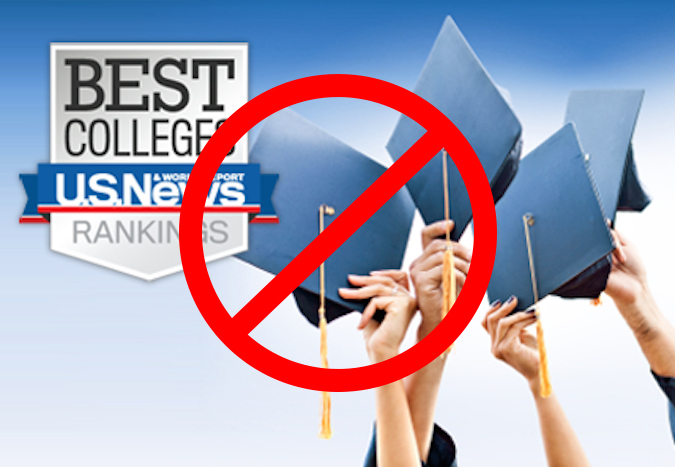
It’s an undeniable fact in the world of higher education: Rankings are big business. Not just for the publication vying for the eyeballs of prospective students, but also for the universities hoping to pull those eyeballs in their direction.
For business schools alone, there’s P&Q’s own ranking for the top undergraduate business schools, Georgetown Center on Education’s ranking of schools where a business major most pays off, and Pitchbook’s ranking for students who want to be entrepreneurs. You can rank schools on return on investment, on acceptance rates, and on total cost.
Now comes another ranking in the long list of rankings, this one with a twist: It calls out – by name – one of the most prominent (and often criticized) players in the game. Today (August 29), Washington Monthly released its 2022 National University Rankings, rating schools based on what they do for the country.
“It’s our answer to U.S. News & World Report, which relies on crude and easily manipulated measures of wealth, exclusivity, and prestige,” the magazine says in its cheeky news release.
A DIFFERENT KIND OF RANKING?
As Washington Monthly notes, U.S. News weights a school’s reputation higher than almost any other metric while rewarding those with a lot of resources – like those with shiny new buildings, bloated administrations, and high-profile sports teams – rather than focusing on value or what happens in the classroom.
“With rising high school seniors and their families awaiting the latest U.S. News & World Report college rankings amid news that several brand-name universities fudged their data to the magazine, the Washington Monthly today is releasing its alternative rankings, which have avoided such scandals by focusing on data that is more reliable and relevant to the majority of students, as well as to policy makers,” reads the release’s opening paragraph.
It also links to a story in the September/October issue written by James Fallows, “the acclaimed journalist and former U.S. News editor fired by U.S. News‘s owner after questioning that magazine’s rankings metrics.” Way to twist the knife.
The release highlights several cases of data manipulation in U.S. News’ rankings: U.S. News “deranked Columbia University in July, months after one the school’s own math professors claimed its high ranking was achieved by “inaccurate, dubious, or highly misleading” disclosures. Also this summer, University of Southern California’s Rossier School of Education informed U.S. News that it had been inaccurately reporting data for several years. And, the former dean of Temple University’s Fox School of Business, Moshe Porat, was sentenced in March 14-months in federal prison, in the largest ranking fraud in the history of higher education Porat is currently out on bail, awaiting a decision on his appeal.
METHODOLOGY
Washington Monthly says it’s different because it uses publicly available data mostly collected by the federal government, and universities are less likely to cheat and lie when reporting to the feds. U.S. News’ metrics rely on university responses to its proprietary survey. That makes the U.S. News ranking ripe for manipulation, the Monthly says.
(As Porat himself reportedly said when his cheating scandal was unraveling: “(U.S. News) didn’t catch it for all those years, they’re not going to catch it now,” )
The Monthly’s methodology starts with colleges listed in the U.S. Department of Education’s Integrated Postsecondary Education Data System.It ranks them based on three equally weighted categories:
- Social mobility: Metrics include percentage of students receiving Pell Grants, enrolled in ROTC, and other social mobility programs; graduate rates, net price, and more.
- Research: Metrics include total research spending, the number of science and engineering PhDs awarded, number of undergraduate alumni who have gone on to receive a PhD and more.
- Community and national service: This score was derived by looking at AmeriCorps and Peace Corps data, military service, students completing national service, and students receiving the Segal Award.
The top 20 schools from Washington’s Monthly’s 2022 National University Rankings can be seen in the chart below. See the full list here.
NEXT PAGE: A Tale of Two Rankings + Top 10 ‘Bang for the Buck’ Colleges by region











Questions about this article? Email us or leave a comment below.